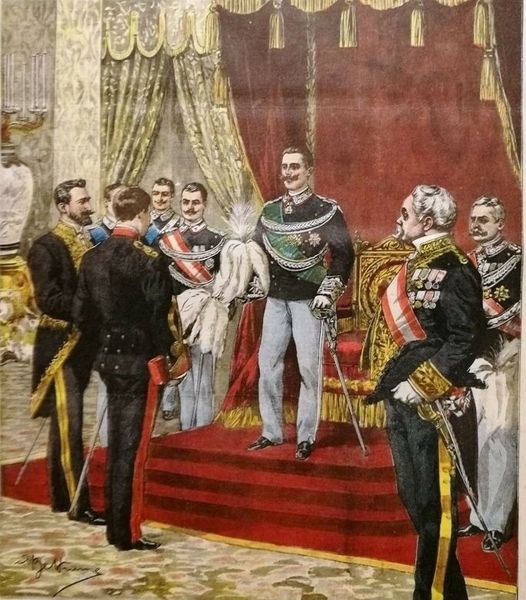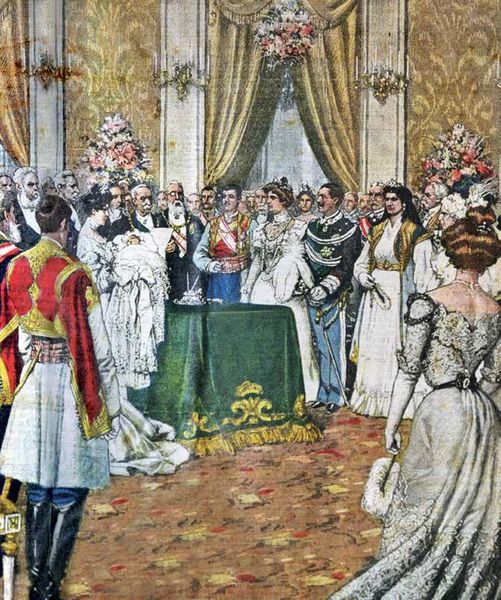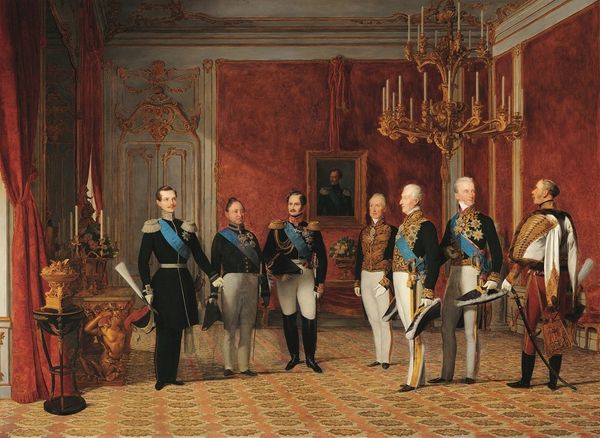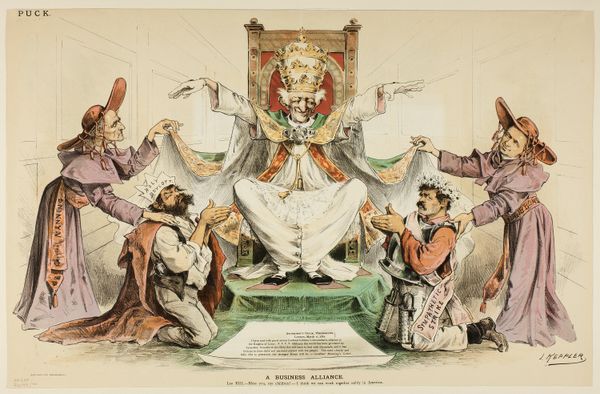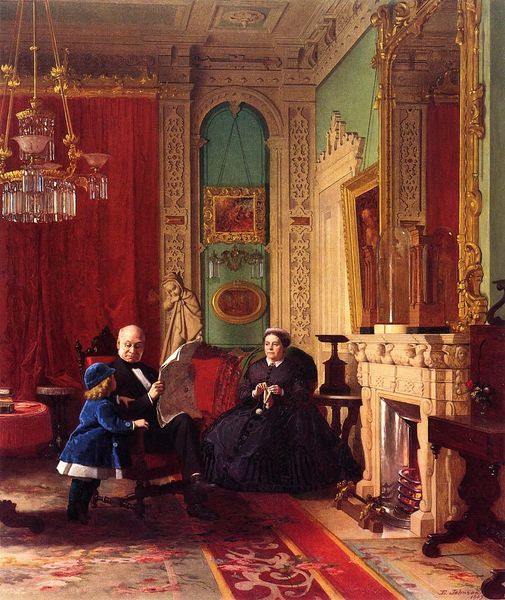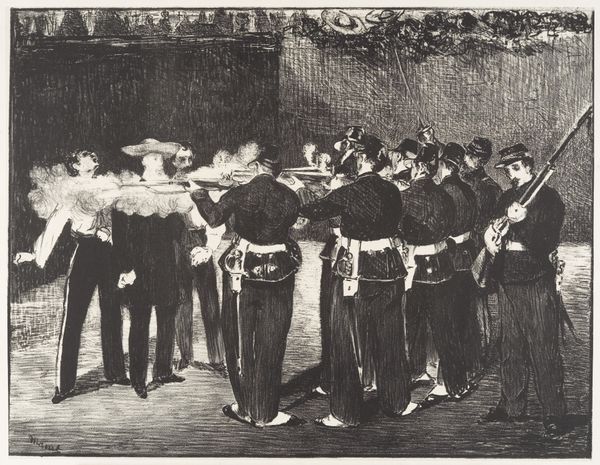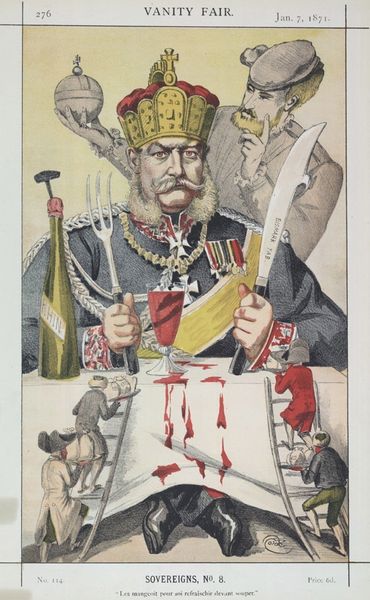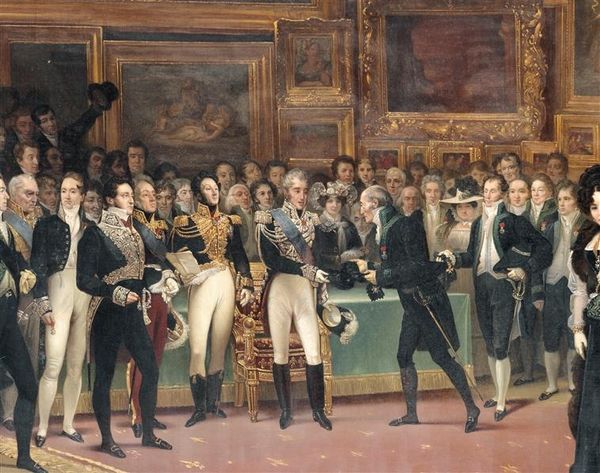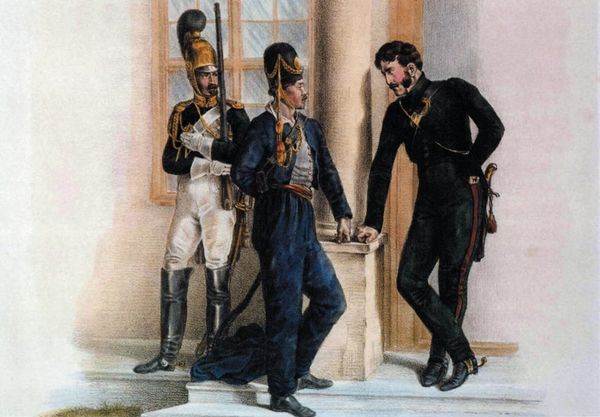
#
oil painting
#
acrylic on canvas
#
spray can art
#
artist choice
#
surrealist
#
3d art
#
portrait art
#
fine art portrait
#
celebrity portrait
#
digital portrait
Copyright: Public domain
Curator: Looking at Achille Beltrame's "Oath of Vittorio Emanuele III," created around 1900, I’m immediately struck by the opulence. It's dripping with formality, all that gold and red... gives me a sort of regal indigestion just looking at it. Editor: It’s interesting you say that, because for me, it's not just the visual splendor. It's a loaded depiction of power during a time of significant social and political upheaval. Consider the rise of socialism and anarchism in Italy around the turn of the century. This painting feels like a staunch counter-narrative, an attempt to solidify the monarchy’s image through grand spectacle. Curator: Solidify or…overcompensate? Seriously, it’s like they commissioned the painting specifically to scream, “We’re still in charge, everyone!” The meticulously rendered uniforms, the symbolic sword, the vacant throne… I can’t help but think it's overdoing it. The brushwork is tight, controlled, almost afraid to let loose and… live. Editor: And that control is entirely deliberate. Beltrame’s technique reinforces the rigidity of the social hierarchy. Everything is so clearly defined; everyone is in their rightful place—or, at least, where the ruling class desperately wanted them to be. Notice, too, how Vittorio is framed – he embodies the ideal of strong leadership at a crucial historical moment for the Italian monarchy. Curator: Right. But for me, all that careful construction ultimately feels… hollow. All show, very little substance. Look at their faces, all stiff upper lip and thinly veiled boredom. It lacks soul, passion. It feels more like political advertising than genuine portraiture. Editor: Perhaps. But remember, this wasn't just about individual personality; it was about projecting an image, perpetuating a myth of unwavering strength and divinely ordained rule at a time of rapid societal change. And who paid for the advert? I'm also fascinated by how it subtly legitimises colonial power during this period as well. The composition invites reflection of how systems and individuals interlock within networks of authority. Curator: A gloriously framed piece of propaganda, then? Even the details, though perfectly painted, seem deadened by their very perfection. Makes me think about how even a masterful stroke can become a tool of… obfuscation. Editor: Indeed. Ultimately, it becomes a complex artifact, embodying both artistic skill and a very specific, self-serving agenda. Examining such works compels us to ask—what narratives are being intentionally created or erased and what effects are sought in viewers as it depicts? I think this artwork encourages us to look past the surface in order to reflect critically. Curator: I suppose it's a pretty good snapshot of the period in all its contradictions and pomp, even if it did make my stomach clench slightly!
Comments
No comments
Be the first to comment and join the conversation on the ultimate creative platform.
